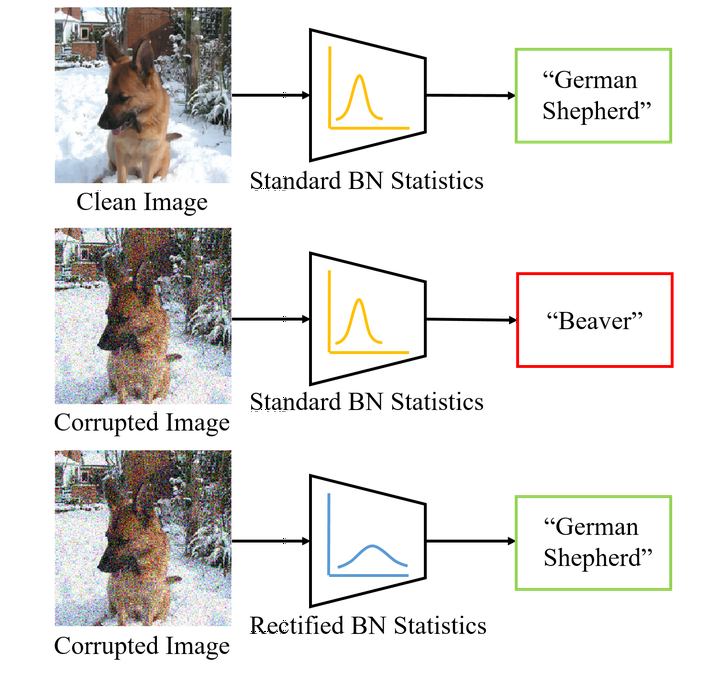
Abstract
Modern deep neural networks (DNN) have demonstrated remarkable success in image recognition tasks when the test dataset and training dataset are from the same distribution. In practical applications, however, this assumption is often not valid and results in performance drop when there is a domain shift. For example, the performance of DNNs trained on clean images has been shown to decrease when the test images have common corruptions, limiting their use in performance-sensitive applications. In this work, we interpret corruption robustness as a domain shift problem and propose to rectify batch normalization (BN) statistics for improving model robustness. This shift from the clean domain to the corruption domain can be interpreted as a style shift that is represented by the BN statistics. Straightforwardly, adapting BN statistics is beneficial for rectifying this style shift. Specifically, we find that simply estimating and adapting the BN statistics on a few (32 for instance) representation samples, without retraining the model, improves the corruption robustness by a large margin on several benchmark datasets with a wide range of model architectures. For example, on ImageNet-C, statistics adaptation improves the top1 accuracy from 40.2% to 49%. Moreover, we find that this technique can further improve state-of-the-art robust models from 59.0% to 63.5%.